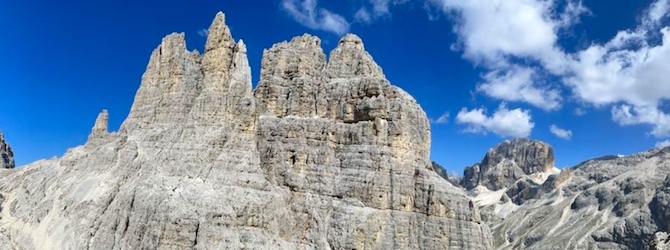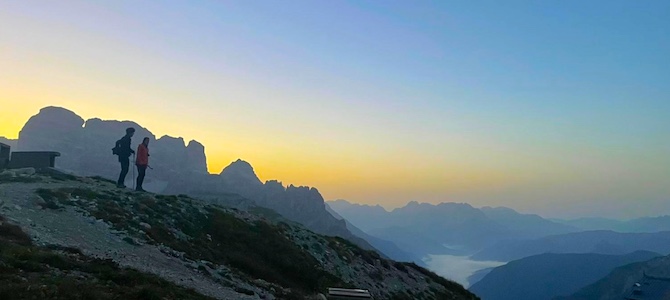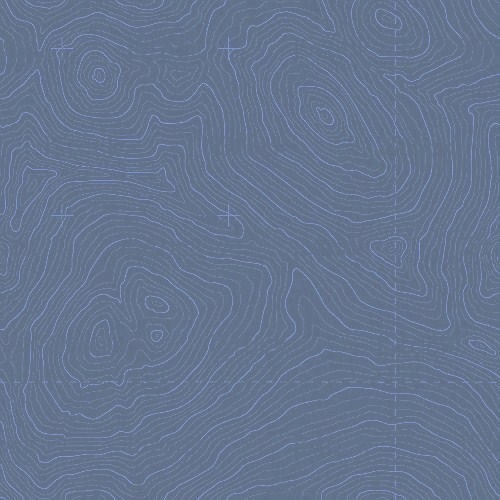Dolomites
AV1 self-guided 2027
Classic
hut-to-hut trek in the Italian Dolomites  |
|
|
|
|
|
|
|
 |
 |
| Self-guided
Dolomites AV1 trekking holiday |
 |
How
to book a trip |
 |
 |
 |
Self-guiding
is a rapily growing market, but
for those who have not come across
the concept before, it couldn't
be simpler. You guide yourself
and all the logistics are arranged
for you. We organise all the boring
bits so you don't have to; route
information, maps, hut bookings
etc. You walk with your friends,
at your pace, rather than as part
of a group. |
 |
We
have a logistics team in the Alps,
and you'll have a Skype briefing
before you depart with one of
our guides. This is an essential
resource in case you need any
assistance during the week. It
is there, with a 24 hour emergency
number, to support you throughout
your trek. This level of support
is not possible from others without
a team in the Alps. |
 |
Within a week of your trip, you
are sent route cards and mapping for the trek. If you
live outside the UK, you can either
pay for international postage,
or some groups arrange to collect
this from the hotel at the start
of the trek. They can alternatively be provided electronically for free. We provide route
cards for each stage of the trek,
and these are key navigational
aids, as well as providing lots
of details of the area. |
 |
We
consider that the detail and accuracy
of our routecards are a key selling
point for our self-guided treks
as they have been meticulously
researched and produced by our
guiding team. The routecards also
detail emergency escape routes,
local numbers, and key information
about the route. One set of routecards,
maps, etc is provided per group. |
 |
Price
inclusions |
 |
Booking
of the mountain hut and valley
accommodation in your name. |
 |
Mapping of the route, for you
to keep even after your trek is
finished. |
 |
The detailed Icicle route information
cards, so you know where to go. |
 |
Language
cards with key phrases, so you
can communicate confidently. |
 |
Emergency
procedure and mountain rescue
card, in case of an incident. |
 |
Local information sheets, with
details about the region and key
sights. |
 |
Briefing
before arrival via Skype, about
the route and kit, from a guide. |
 |
24
hour in-resort emergency contact
support through our Alpine team. |
| Exclusions.
Travel to Dolomites, all accommodation
/ food / lodging costs, activities
& travel insurance, equipment
hire, all other costs as required
such as valley transport via bus
or train. |
|
|
| Our
itinerary can start on any day that
you choose, so decide what day you would
like to start your trek, and get in
touch with us by e-mail. We will then
upload a private self-guided trip onto
our online booking system, that is in
your name, and then you can book and
pay securely online. You receive an
immediate e-confirmation and equipment
list to help you start packing, as well
as an Self-Guided Alpine Booklet. You
receive your trip detailed itinerary
and walking notes etc about two weeks
befoe you depart. |
 |
 |
 |
| Need
any training? |
 |
| Some
groups who are not as sure of their
mountain skills, such as navigation,
and over steep ground, arrange a day
or two of private guiding in the UK
Lake District before their trip. If
you would like to get a quote for this,
get in touch. |
|
|
|
 |
 |
 |
Italian
Dolomites AV1 self-guided trek itinerary
11 days holiday, with 9 days trekking |
Price: note these are the total prices, NOT per person.
Group of 1-2
pers  £399 £399 Group of 3-4
pers Group of 3-4
pers  £599 £599 Groups of 4 are the largest that we accept. Groups of 4 are the largest that we accept. |
|
 |
 |
 |
 |
| Day
1 |
Arrival
day |
Travel
to Venice and bus to Cortina. Fly into Venice,
which is served by a wide range of airlines including
EasyJet, British Airways, Jet2, Ryanair, and BMI.
The bus costs c.10€ from Venice to Cortina
d’Ampezzo. Night in a hotel in Cortina, which
is a bustling Italian town with plenty of shops
and restaurants.
|
n/a |
| Day
2 |
Trekking
Stage 1 |
Lago
di Braies to Rifugio Sennes. Catch the morning
bus from Cortina bus station, via Dobbiaco on to
the Lago di Braies, which is the official start
point of the AV1 at 1494m. The mountain walls surroung
you, and as you leave the lake behind and head up
through the pines, you may be lucky to catch a glimpse
of the Tre Cima ahead of you. There's a stiff first
ascent up to Rifugio Biella 2327m, and the option
of taking in the peak of Croda del Becco 2812m,
or you can take the trail more gently down to reach
Rifugio Sennes 2126m for the night. Here the surrounding
peaks are a stunnig vista; Cristallo, Sorapic, Tofana
and Croda Rosa, all magnificent. |
 10km
10km
+940m
-300m |
| Day
3 |
Trekking
Stage 2 |
Rifugio
Sennes to Rifugio Fanes. The trek sets off along
an old miltary track from WW1, through a narrow
gorge down zig-zags to reach Rifugion Pederu 1548m,
where you could stop for lunch. Beyond, the tral
ascends up through the stunning karstic landscape,
alongside a stream along the Valun de Fanes, to
arrive at the Rifugio Fanes 2060m, far above the
town of San Vigilio di Marebbe. The area is all
withinb a national park. You stay at the Rifugio
Fanes for the night. |
 10km
10km
+570m
-640m |
| Day
4 |
Trekking
Stage 3 |
Rifugio
Fanes to Rifugio Lagazuoi. The trek along the
AV1 ascends from the Rifugio Fanes through a seemingly
lunar limestone landscape to the Lago di Limo lake
at 2157m. Beyond, as you reach the Passo Tagéda,
there is a path junction, and there is an easier
(or bad weather) or tougher route choice. Both routes
join again at Lago Lagazuoi 2182m. The steeper option
ascends, followed by a steep but manageable descent
down a gully towards the lake. The easier trail
takes broads tracks past the Forcella del Lago 2486m,
then trists its way more gently down to the lake.
Beyond, you start a long and steady ascent up towards
the Rifugio Lagazuoi 2752m, and on route will pass
the old Autro-Italian WW1 front lines, and when
not looking at these, keep an eye out for Edelweiss
growing in this area. Continue up the zig-zags to
the Rifugio Lagazuoi where you stay for the night.
There's a big terrace, and this hut even has a sauna! |
 12km
12km
+1060m
-410m |
| Day
5 |
Trekking
Stage 4 |
Rifugio
Lagazuoi to Rifugio Nuvolau. The sunsets and
sunrises at the Rifugio Lagazuoi are well worth
watching, so a top tip is to get up early to get
some photos! Here the area is full of WW1 history,
with trenches, tunnels, gun placements, and ruins.
It's a poignant area, where it's incongruous and
hard to imagine warface in such a beautiful landscape,
and if you wish you can explore some of the tunnels
near the hut (be careful of your head if you're
tall). The trail then crosses the mountainside of
the Tafana des Rozes, across a scree slope. It's
not too technical, but take care on this section.
You arrive at the Rifugio Dibona 2037m, which is
an ideal lunch stop, and you'll probably see many
chamois grazing on the spare vegatation. The next
section of trail is easier as you walk through pine
and rhododendron forests along a larger track. The
peaks of the Conque Torra dominate the view. You
pass the Rifugio Averau 2413m, and continue to Rifugio
Nuvolau 2575m where you spend the night. It's the
oldest hut in the Dolomites, originally built back
in 1883.
|
 15km
15km
+1030m
-1140m |
| Day
6 |
Trekking
Stage 5 |
Rifugio
Nuvolau to Rifugio Citta di Fiume. Unless you
are happy on an easy via ferrata section, descend
to the Rifugio Averau 2413m, and from there follow
the trail towards Rifugio Passo Giau 2236m. This
section of the trek will really appeal to nature
lovers and botanists, as you hike through meadows
full of Alpine flowers. In terms of wildlife, keep
your eyes and ears open, and with luck you'll see
eagles, marmots, and chamois. You arrive at the
Rifugio Citta di Fiume 1918m, which was converted
from an old farm building. |
 12km
12km
+540m
-1150m |
| Day
7 |
Trekking
Stage 6 |
Rifugio
Citta di Fiumeto Rifugio Coldai. There's
a start contrast between the soaring limestone mountains,
and the benign trekking routes below them, and today
you continue through flower filled high pastures,
then some easier scree trails, to arrive at the
Rifugio Passo Staulanza 1783m. The local rumour
says that this hut has the best Italian hot chocolate
in the whole of the Dolomites, so it would be rude
not to test it! From here the trail ascends to reach
the Rifugio Coldai 2132m, where you spend the night. |
 10km
10km
+620m
-400m |
| Day
8 |
Trekking
Stage 7 |
Rifugio
Coldai to Rifugio Passo Duran.
The day starts hiking to the Lago Coldai, whose
waters mirror the peaks all around. It's a stunning
setting, and many photographers love this place.
After leaving the lake behind you cross a small
col, then descend into the next valley, with the
dominant view being the Lago di Alleghe ahead.
Then it's a steady ascent over the Forcella di
Col Rean pass. The objective for the day is the
Rifugio Passo Duran, and you cross a series of
smaller passes one after the other to reach it.
Today is the longest stage of the AV1, as you traverse around
the Civetta mountain range. At the end of the
trail, you arrive at the Rifugio Duran 1605m,
where you spend the night.
|
 20km
20km
+1300m
-1830m |
| Day
9 |
Trekking
Stage 8 |
Rifugio
Passo Duran to Rifugio Fontana. Todays
trek takes you into the next National Park of Dolomiti
Bellunesi. This is a beautiful and more remote section
of the trek, with great views throughout. The day
starts heading up to the Forcella del Moshesin 1950m
pass, and across the boulder strewn rock slopes
of Cima de Zita. As you are in the national park,
you'll be likely to spot plenty of chamois and marmots,
as well as enjoying the wild flowers. There are
a couple of passages that are steep, and there is
some unavoidable steeper ground, but if you've hiked
the Haute Route, or harder variants of the Tour
du Mont Blanc, you'll be absolutely fine. The ridge
leads to a high pass at 2451m, and you can gaze
across the plain towards Venice. Later the trail
descends steeply to arrive at the Rifugio Pian de
Fontana 1632m, where you stay for the night. |
 16km
16km
+1100m
-1030m |
| Day
10 |
Trekking
Stage 9 |
Rifugio
Fontana to La Muda & Belluno. This final
stage of the AV1 is almost entirely descent, along
a winding mountain trail through flower meadows
and mountain farms. The meadows give was to woods,
and you can stop for a rest at Rifugio Bianchet
1245m, before the final descent through the woodland
to arrive at the road at the village of La Muda.
From here you can catch a bus for the 30 minute
drive to Belluno, where you stay in a hotel for
the night. This town has a great selection of bars,
shops and cafes, and is a great place to relax after
completing the AV1. |
 12km
12km
+480m
-1670m |
| Day
11 |
Departure |
Breakfast
& depart. After breakfast, you can take a train
from Belluno, via the town of Conegliano, back to
Venice. This journey takes c.1hr50 by train, or
alternatively there is a bus. |
n/a |
|
 |
 |
 |
| Key
notes for the Domolites AV1 self-guided trek |
 |
 |
The
AV1 makes a complete traverse from North to South
of the Italian Dolomites. The region is famed for
its limestone mountainsm soaring cliffs, impossibly
blue lakes, and WW1 history. It's a trek that is
varied in terms of landscape and terrain, with the
highest point being Rifugio Lagzazuoi 2750m, where
you spend a night. |
 |
Due
to the number of higher sections of the AV1, which
often keep snow slightly longer than in other areas
such as the TMB, we recommend the best season for
self-guided treks to be between early July and mid
September each year. The huts are open earlier,
but we take this policy for your safety. |
 |
As
a national trail, the AV1 is well waymarked, perhaps
better even than the Tour du Mont Blanc. There are
regular signs, and painted AV1 symbols on the rocks.
Even so, a good basic level of navigation is sensible.
There are no obligatory via ferrata, and the trail
is a mountain walk, though with a few steeper sections,
and some passages that are on easier scree slopes. |
 |
In
terms of comparing the AV1 to other self-guided
Alpine treks, it's slightly above the level of the
Tour du Mont Blanc TMB, and just below that of the
Walkers Haute Route, though the penultimate stage
is similar technically to the terrain on the WHR.
The AV1 will appeal to those who have slightly more
mountain skills than the typical TMB trekker, as
there are a few sections where good balance is required. |
 |
We
are the only operator with a logistics and guiding
team in the Alps, whom will brief you via Skype
about one week before your trek starts. This is
a highly personalised service, which is unique to
Icicle, as you are briefed by a professional guide,
who will typically have trekked the AV1 route many
times. You have the security of knowing you are
backed up by a local resort team of qualified professionals. |
 |
On
each night of the trek you are booked into mountain
accommodation, which we also use for our guided
groups. These vary from chalet style, to gites,
mountain huts, and lodges. Each day you should easily
be able to complete the trek by mid afternoon, to
minimise the risk of being caught in any afternoon
convention storms. If you ever are likely to arrive
after 5pm, call ahead to ensure your reservation
is kept. |
 |
The
accommodation in Cortina at the start of the trek, and
Belluno at the end of the trek, is typically in a 3***
hotel. If you wish for greater / less luxury for each of these nights, let us
know when you book. |
 |
The trekking nights are all
in mountain huts, generally in small dormitories. We default to book the cheapest bed spaces available at each of the mountain huts, and WC's and showers are shared facilities. If you are seeking private rooms for your trek, it's not a service we provide. On the
nights in mountain huts you should budget for c.£40-60
pppn for half board (evening meal, bed and breakfast). The
range of prices in huts is a factor or room size. Packed
lunches can be ordered in huts for c.£15 per day. |
 |
Note
that once you have started on your trek, any accommodation
that has been booked cannot be altered or cancelled,
and if any changes are made / you do not arrive,
you will be billed for the stay anyway. By booking,
you accept this, and will sign authorisation at
the briefing for your card to be charged for any
no-show or cancellation. This is to protect your
bookings without paying up-front deposits. |
|
|
 |
 |
 |
Book early for 2027...

Bookings for 2026 are now closed. Alpine mountain hut spaces are very limited.

2027 treks - book before the 01/12/2025, to guarantee trip availability & these prices. |
|
 |
|
Alternative self-guided trips |
 |
 |
|
|
 |
 |
 |
|
Why a self-guided trek? |
 |
 |
 |
 |
 |
For
those who have not come across the concept of self-guiding
before, it couldn't be simpler. You guide yourself
and all the logistics are arranged for you. |
 |
We
organise all the boring bits so you don't have to;
route information, maps, hut bookings etc. You get
to walk with your friends, at your pace, rather
than as part of a group. |
 |
We
have a seasonal team in the Alps, and you are given
a briefing (c. 45 - 60 mins) by one of our guides,
via Skype, typically within a week before you depart.
|
 |
Our
UK office has a full time logistics team, so support
our guides. This is an essential resource for you,
in case we need to change hut bookings or any part
of your itinerary. |
 |
We
have a 24 hour emergency and local contact number,
for urgent queries during the trek. This level of
support is unique to us. |
 |
The
route notes have been meticulously researched and
produced by our UIMLA guiding team. They are informative
and also detail emergency escape routes, local numbers,
and key information about the route. |
 |
Note
that the route notes used on self-guided treks are
suggestions, and that should you opt to alter any
section of the route, you would be operating outside
the remit of the trip. Our treks are designed for
you to walk the whole route, and we don't include
minute detail on how to complete the tour by public
transport, just escape routes. |
 |
You
are totally responsible for your own safety on self-guided
treks, as there is no guiding element to the package.
One set of route notes, maps, etc is provided per
group, in paper / electronic format. |
 |
Our
route notes follow the AV1, and in some cases a
popular 'official' variation that we consider merits
the extra distance or diversion. |
 |
Our
itinerary can start on any day of the week that
you choose, so decide when you would like to start
your trek, and get in touch with us by e-mail. We
upload a private self-guided trip onto our booking
system, and then you can book and pay securely online.
Please note that we only accept bookings up to two
months before departure, to guarantee availability
in mountain huts & accommodation. |
 |
You
receive an immediate e-confirmation and equipment,
as well as an Self-Guided AV1 dossier. You receive
your trip detailed itinerary and walking notes etc
about one week before travel. Once the trip balance
is paid, you can request to be sent the GPX files
and notes, if you intend to use a GPS.
|
|
 |
| Inclusions |
 |
 |
 |
 |
 |
Booking
of the mountain huts and valley accommodation during
the trek, made in your name. |
 |
Mapping and trip notes of the AV1, for you to keep even after
your trek is finished. |
 |
The detailed Icicle route information notes, so
you know where to go. |
 |
Language
notes with key phrases, so you can communicate confidently
during the trek. |
 |
Emergency
procedure and mountain rescue notes, in case of
an incident. |
 |
Local
information sheets, with details about the region
and key sights to take in on the route. |
 |
Briefing
via Skype about the route and kit to take, from
a UIMLA guide. |
 |
24
hour in-resort emergency contact and queries support
throughout. |
 |
Discount
voucher for use in our Windermere store / online
purchases. |
|
 |
| Exclusions |
 |
 |
| Travel
to Dolomites, all accommodation / food / lodging costs
(i.e. price of the half board stay in mountain hut or
accommodation), activities & travel insurance, equipment
hire, all other costs as required. |
 |
| Post-booking
changes |
 |
 |
| Changes
to the group size after booking are subject to availability and cannot be guaranteed if requested. They will incur a price change
if it alters the group size price bracket, and a £100
administration fee. If the group size change is made within
8 weeks of the trip, it will be treated as a new booking,
and priced accordingly. All the huts will need to be contacted
to alter the reservations. Transfers of dates on a self-guided
trips are treated as cancellations. |
 |
| Will
the AV1 suit you? |
 |
 |
| Many
people contact us about whether the self-guided option
would suit them in terms of experience. All we ask is
that you feel confident in the following... |
 |
 |
Navigation
in poor visibility, such as dense cloud even in
snow. |
 |
Security
on steep / loose ground in terms or personal ability.
|
 |
Language
skills in case of an emergency, & to communicate.
|
 |
First
aid training and medical awareness, e.g. altitude
sickness. |
 |
If
unsure at all about any of these points, consider
a guided trek. |
|
 |
| If
you aren't sure about any of these skills listed above,
as a guided option can often work out a very similar budget
anyway, and then you have the peace of mind that you are
led by a fully qualified and highly experienced UIMLA
International Mountain Leader. As well as showing you
the route, they make all the mountain safety decisions,
and offer added value in that they can tell you a lot
about the local region. Opting for a guided trek doesn't
mean that you couldn't have done the trek it self-guided,
but that you want to share the experience with others,
make friends, and learn a lot more about the mountains,
routes, customs, guided by an expert. |

|
| Any
further questions? |
 |
 |
A
key part of choosing a company is being able to come and
talk about your plans with an experienced course advisor
face to face. In an increasingly virtual world, we know
our clients value speaking to real people, getting open
and honest advice. The vast majority of our clients are
British, and our office and outdoor store is based in
Windermere in the English Lake District. Arrange a meeting,
and come in for a coffee to discuss your course in person
with a trip
advisor. Many people opt for this service,
and it is an integral part of what we offer, to ensure
that you are prepared as possible.

 

As
well as talking though your course, most clients have
queries about the kit they will require, to avoid expensive
mistakes, and we can show you some examples of that to
consider. Others have training queries, about how to best
prepare for your trip, and we will be able to steer you
in the right direction. No question is too silly, and
we'll have heard them all before! An integral part of
booking is the ability to get good knowledgable advice,
and a highly personal service. Unlike companies that only
exist virtually in cyberspace, we are staffed by real
people, in a real office, who offer real honest advice.
Because we are tangible, we are accountable, and we take
great pride in that and the service that we offer you.
Get in touch to come in for a chat soon. |
|

